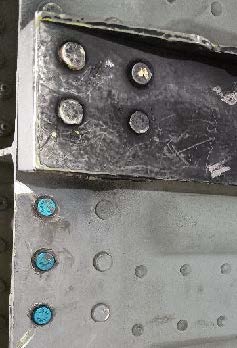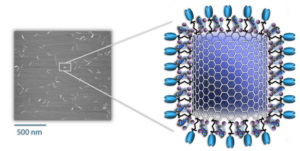The short carbon nanotubes (SCNTs) are different than traditional or commercially available carbon nanotubes since they are precisely cut, separated, and purified to obtain a narrow size distribution and ensure biocompatibility, which reduces safety concerns caused by traditional long or bundled carbon nanotubes. Due to their high surface area, SCNTs can be modified with multiple copies of a payload or even different payloads.
What’s the significance of a “short carbon nanotube-based platform”? How do you envision this technology changing healthcare delivery?
Despite the advantages of mRNA vaccines, challenges remain. The current delivery method uses lipid nanoparticles with known inflammatory reactions and no innate immune response. The NanoVac platform is designed to “mimic” virus structure and offers significant improvements. It can:
- protect mRNA from degradation during normal distribution and storage
- increase the blood circulation half-life
- ensure uptake by cells
- enhance the mRNA expression in the cells
- vaccinate against multiple targets simultaneously
- reduce the dose of biologics and the toxicity of the delivery vehicle
As a result, the NanoVac approach can potentially help increase biocompatibility and patient tolerance while simplifying production capabilities and reducing costs.
When you think about the future of NanoVac, what are some of the next steps in getting it into clinical use?
Our immediate next steps are to finalize manufacturing capabilities and develop safety profiles for clinical trials. At the same time, we are seeking collaboration with various pharma companies to explore hundreds of mRNA- or nucleic-acid based agents to fight against cancer and other diseases.
Tell us about your vision for what Luna Labs’ biotech teams can accomplish. What are their competitive advantages? Strengths?
At Luna Labs, we have a wonderful mix of young investigators who bring bright, bold ideas and experienced leadership teams with the drive to understand the needs of our customers and markets. It creates an inspired environment for cross-disciplinary collaboration, exploration, and commercialization. It means we’re judicious in the problems we decide to tackle, but fearless and confident in our abilities to create high-impact solutions.
You have a strong nanotech and nanopharma background. Tell us about some of your research highlights over the course of your career.
While I’ve worked on several different disease models, I’m most pleased with the work accomplished on a carbon-based nanodelivery platform for cancer treatment and a layer-by-layer delivery and sustained release platform for COVID vaccine and Malaria vaccine.
Of course, our team’s work on the NanoVac short carbon nanotube nanodelivery platform holds huge promise for improved healthcare delivery and ultimately better patient experiences.
What inspires you to come to work every day?
My colleagues and I share a common mission. We come to Luna Labs not to do pure research but to create products that can positively change lives.





